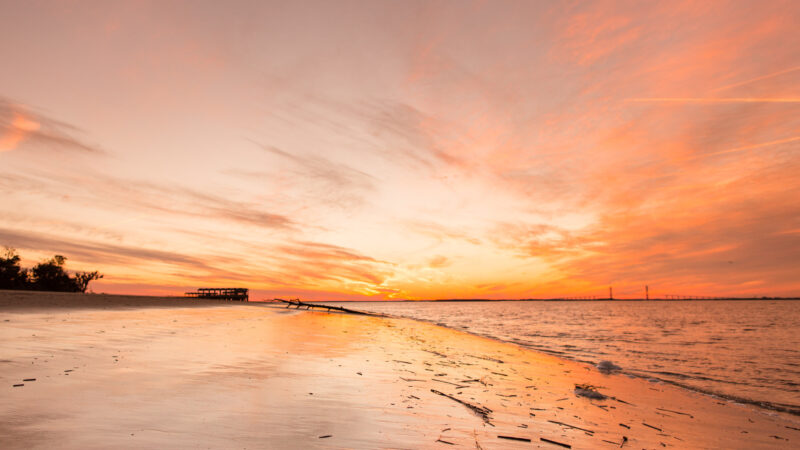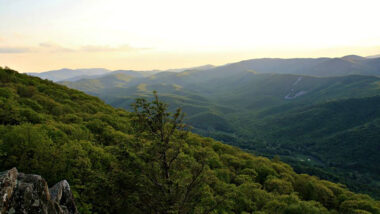Table of Contents Show
The sandy shores of Florida get more acclaim, but we love to visit the beaches in Jekyll Island. They are farther north on Georgia’s Golden Isles that dot the Atlantic coastline.
If you’re traveling from the north toward Florida Interstate 95, these places are only a few miles away. Keep heading south, and you’re missing out.
Read on to find out why the beaches in Jekyll Island are worth a stop. We’ll give you a breakdown of each beach on this barrier island.
Let’s dive in!
Where Is Jekyll Island?
This vibrant island community is toward the southern end of Georgia’s eastern edge. Savannah and Tybee Island are about 90 miles to the north, and Jacksonville, Fla., is 75 miles to the south.
Looking at a map, you’ll find Jekyll Island below the more famous St. Simons Island and above Cumberland Island National Seashore. The nearest inland city is Brunswick, about a 20-minute drive away.
To reach these beaches in Jekyll Island, you’ll take U.S. Highway 17 to the Jekyll Island Causeway (State Highway 520).
You’ll need to purchase a parking pass for entry, or you can do it in advance online. The fee is $8 a day, or $12 for vehicles over eight feet tall.
What Is Jekyll Island Known for?
Besides its natural beauty, the 5,500-acre Jekyll Island has many attractions and comforts to entice the tourist trade. You could say it’s developed there but not overdeveloped.
There are many shopping and dining opportunities, golf courses, a water park, and 20 miles of bike trails.
The island, which got its name from an early British colonist Joseph Jekyll, has a rich history. Several of the nation’s wealthiest families purchased the former plantation land in 1886 as a private retreat.
They were aristocrats and magnates with familiar last names like Rockefeller, Morgan, Pulitzer, and Vanderbilt. A meeting on Jekyll Island in 1910 to discuss forming a central bank led directly to the creation of the Federal Reserve.
The state of Georgia bought the property in 1947 and promoted it heavily once the causeway opened in 1954.
Can You Swim in the Ocean on Jekyll Island?
Yes, but unfortunately, it’s not always the best idea to get in the water at Jekyll Island. The health department sometimes issues advisories against swimming or wading in some beaches in Jekyll Island because of high bacteria levels so make sure you check those before taking a dip.
The waters have long had a brownish hue because of muddy water flowing in from the nearby West River, but this is different.
The bacteria enterococcus contains fecal matter from various sources. Experts believe it results from waste from wildlife, boaters, and storm runoff.
Exposure can cause gastrointestinal illness, so it’s best to find out when it’s safe to swim. Depending on conditions, you should also be careful consuming fish or shellfish from these waters.
Does Jekyll Island Have Good Beaches?
The water conditions don’t affect the beaches, however, and they are gorgeous. There are about ten miles of shoreline from the open waters to more secluded marshy areas.
Because of the terrain and unique tidal conditions, you shouldn’t always expect to have huge, crashing waves.
The land along the waterfront is low, flat, and wide, and the twice-daily tides tend to lose much of their power as they cover the distance.
The sand is more firm than the soft, white sand beaches you may find in other areas. Some people love this because they have no trouble walking, jogging, or even riding bikes.
You may find even calmer conditions on the north end. The boulders there serve as breakwaters to slow down erosion. For the most part, people have not developed the beaches in Jekyll Island.
You can find plenty of places to stretch out and enjoy your solitude.
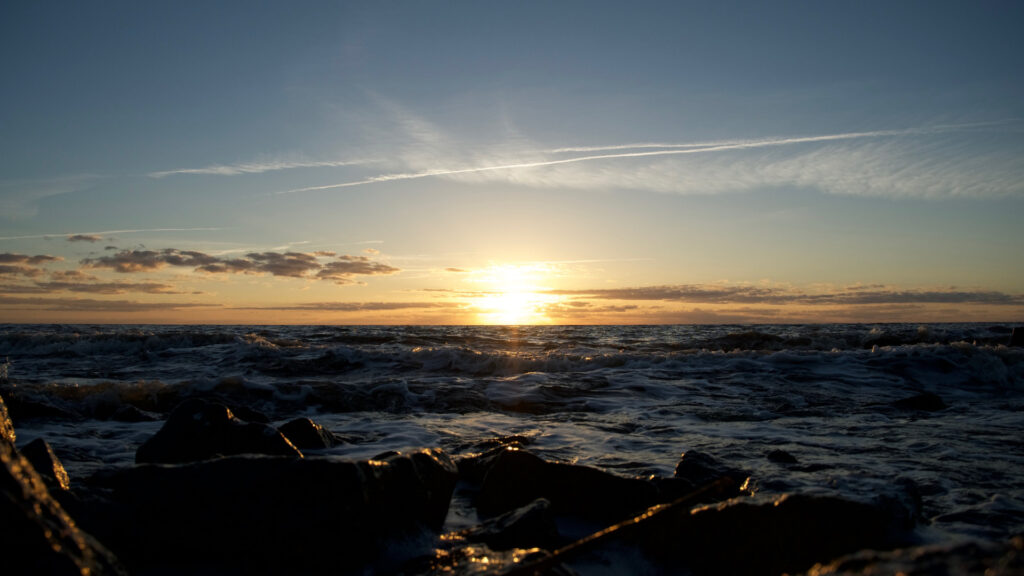
Beaches in Jekyll Island
There are seven main beach areas along the eastern side of Jekyll Island, at a distance of about seven miles.
Amenities vary in each beach area, and all have unique personalities and attributes.
Driftwood Beach
This northernmost beach gets its name from the weathered remains of a thriving forest. The pines and oaks died due to erosion, and many were bleached by the sun.
Their gnarled and twisted trunks have a stark beauty that attracts curious visitors wanting photographs.
Look for this somewhat surreal and beautiful landscape east of the fishing pier.
Keep in Mind: While you’re in Georgia, should you visit any of the national parks? Are the National Parks in Georgia actually worth visiting? Click the link to find out!
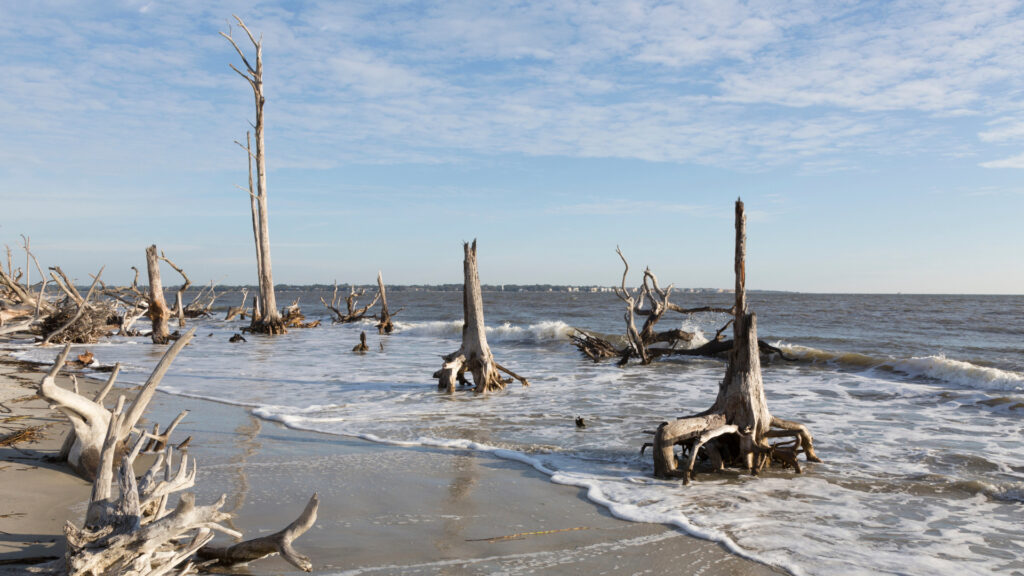
Saint Andrews Beach
On the southern end of the island, St. Andrews was originally a segregated beach for African-Americans.
This history is commemorated today with interpretive signs describing the discovery of a slave ship in the waters nearby.
You can view artifacts from the boat and enjoy a picnic at one of the many pavilions shaded by massive live oaks. There are restrooms and outdoor showers and a two-story wooden observation deck for spotting wildlife.
South Dunes Beach Park
The boardwalk rises to pass over the impressively tall dunes. You’ll also peer into the freshwater pond as you approach the observation deck.
The park has picnic tables, grills, and several pavilions, some with screens to keep out unwanted pests. You’ll likely encounter some birdwatchers since parts of this beach are protected nesting areas.
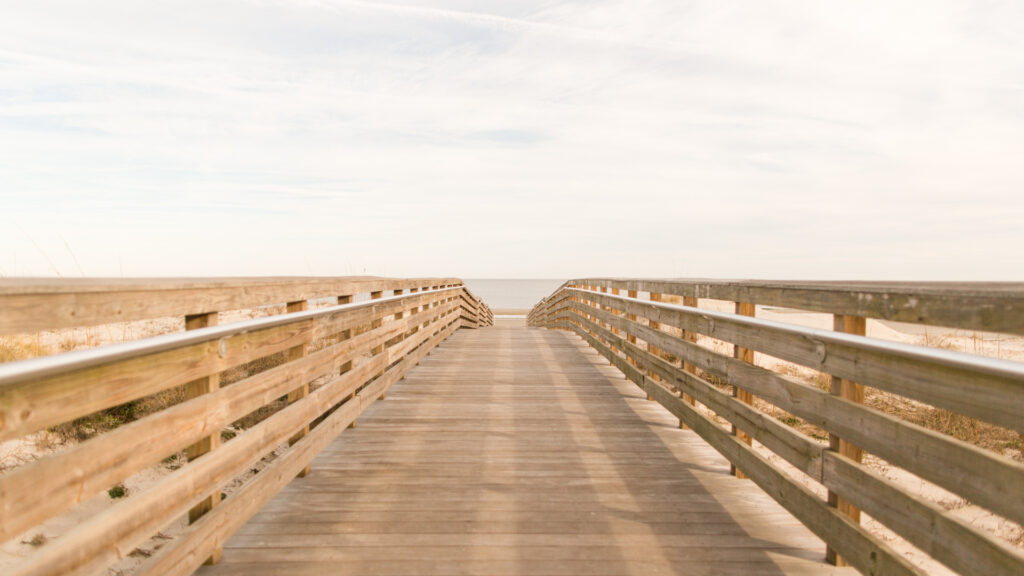
Corsair Beach Park
This park is steps away from Jekyll Island’s Beach Village, with its Main Street-esque block of restaurants and boutique shops. There’s a central courtyard to relax and enjoy sea breezes within easy walking distance of hotels and resorts.
The park offers plentiful parking and has outdoor showers, ADA-accessible bathrooms, and changing areas. There are two covered picnic pavilions.
Glory Beach
This beach gets its name from Hollywood. It was a setting for a few scenes in the Civil War flick “Glory,” starring Denzel Washington, and the name stuck.
Unlike some other beaches in Jekyll Island, this stretch of sand is primarily undeveloped other than a picturesque boardwalk that crosses over tidal pools and dunes.
The film connection garners much attention, but it offers a quiet, peaceful experience when free of gawkers. Gazing southward, you can see Cumberland Island in the distance.
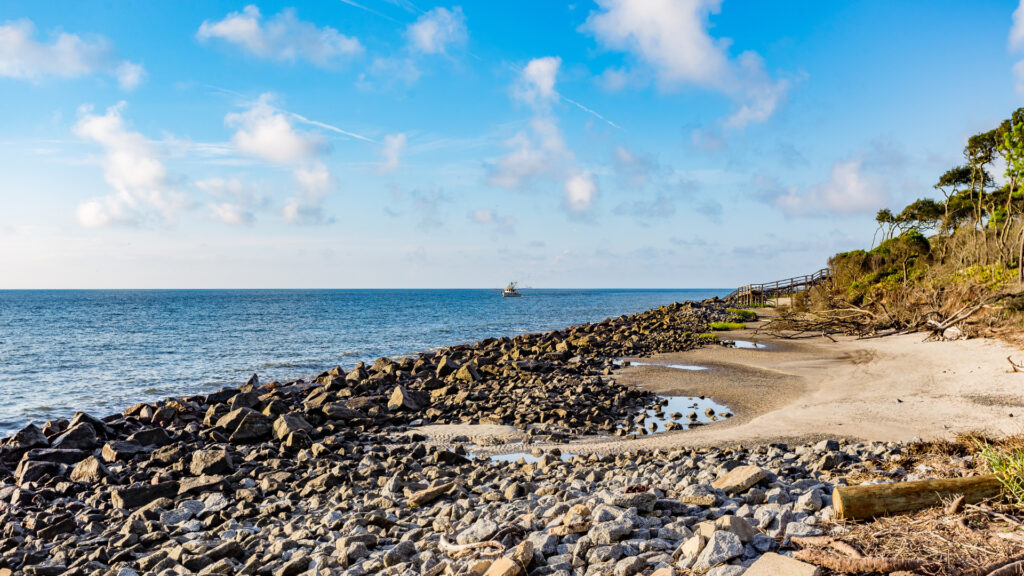
Great Dunes Beach Park
While Glory Beach is exceptionally secluded, this trendy beach is close to many family attractions. Besides being centrally located, there’s ample space for parking.
It’s within easy strolling distance of other points of interest like playgrounds and a miniature golf course. Beachcombers love the broad sand area, and the park has a paved trail, pavilions, and clean restrooms.
Oceanview Beach Park
South of Driftwood Beach, this popular park has sweeping, almost panoramic views of the Atlantic Ocean.
The recently renovated park has ADA-approved access to the beach and a balcony-style deck that’s a beautiful overlook area.
There are seven charging stations for electric vehicles in addition to covered pavilions with picnic tables and grills.
Keep in Mind: Have you visited Little Grand Canyon in Georgia yet? It is one of Georgia’s best kept secrets!
Experience Unspoiled Beaches at Jekyll Island
The beaches in Jekyll Island have much going for them. They are generally user-friendly, with ample parking, clean bathrooms, outdoor showers, and extras like pavilions and electric vehicle charging stations.
It’s a shame that we can’t say unequivocally, “Come on in, the water’s fine.” It’s a fact of modern life that pollution can sometimes damper things.
But look at other visitors’ reviews for a recurring theme: these beaches are stunning and pristine.
They aren’t as crowded as beaches in more famous tourist spots, but they’re not in boring, remote places, either. We love how peaceful these places are, but there are other significant advantages to visiting Jekyll Island.
It’s a short drive from major highways, and there are many fun things to do within proximity of these beautiful beaches.
Will you add Jekyll Island to your travel itinerary?




